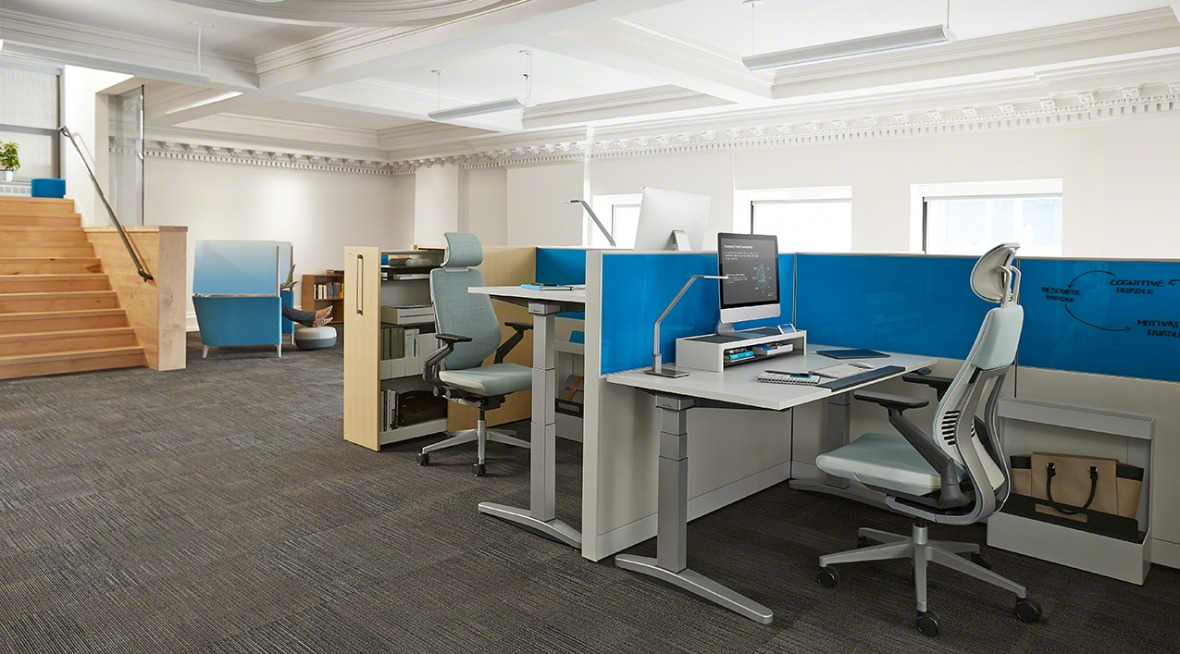We use cookies to maximize your online experience with us. By closing this window, you consent to our cookie policy. You can change your cookie settings in your browser any time. For more information, please see our Privacy Policy located on the footer of this site.
Designing for the Way We Work Now

The first time I ever understood my father’s professional success was when he dragged my brother and me to his office one weekend to grab some paperwork he had left behind. His desk sat in one of the few walled-off rooms with windows, clearly setting him apart. Over the years, his office morphed in ways that reflected increases in his responsibilities, title, and status: bigger, brighter, and even higher in altitude. I soon realized that an office could be a symbol of something greater: a person’s worth.
I started my own career in Detroit’s auto industry in the late nineties, the heyday for standardization and cubicles. Ford Motor Company, for example, still had specifications outlining the exact square footage, furnishings, windows and items a person was entitled to, according to his or her level. The more important you were, the better your space. That sentiment is perhaps why cubicles, which were originally designed to be flexible and promote collaboration, ultimately became the very embodiment of soulless corporate sameness, a visual representation of how easily employees could be replaced.
Today, of course, we see corporate America bucking this trend. Offices across the country are embracing the open office concept. No walls, no offices, no cubicles. Just expansive spaces designed to foster collaboration and communication. And yet, even this movement has its fair share of issues. (An open office is no doubt close to torture for the easily distracted or introverted among us.)
While it’s tempting to declare this evolutionary process a series of failed experiments, I believe it’s something more.
The way we work has changed drastically: laptops and smartphones have replaced the typewriters and Dictaphones of my father’s office. Today’s corporate workforce is made up of knowledge workers, whose capacity for creative thinking, problem solving, and analysis is critical to an organization. At the same time, organizations are flatter, yet more complex, operating with more demands and fewer resources. Employees are multi-tasking and working longer hours.
When The Frontier Project, the Richmond-based boutique consulting firm I currently work for, moved into our new studio last fall, we saw it as an opportunity to create a place that not only reflected our brand and ethos but also amplified the output and performance of our employees.
What we knew we needed above all else was flexibility. So we borrowed from the best of traditional office design as well as more creative office concepts to provide a variety of options, places, and configurations our employees could use as they see fit. We thought about the flow of the building in terms of work activity, then designated space accordingly so that we have six distinct functions: coworking, collaboration, concentration, social, private, and in-between (yes, that last one really is a designated space).
Coworking space
Walk through the front door of The Frontier Project, and you’ll see community tables instead of permanent desks. Employees claim a spot when they arrive and toggle between light chatter with colleagues and working on their laptops. Whoever arrives first chooses the music that plays over the speakers, which provides just the right level of ambient noise (70 decibels, according to researchers at the University of Illinois Urbana – Champaign).
The coworking space in our studio is where habitual work that requires small to moderate levels of concentration happens: email, administrative tasks, and the more mundane but necessary aspects of our jobs. The mundane, we’ve found, is a little more fun in this communal setting. As a bonus, the convenience of sitting in close proximity to so many colleagues often means emails are ditched in favor of faster, more productive conversations.
To read entire article, click here!
